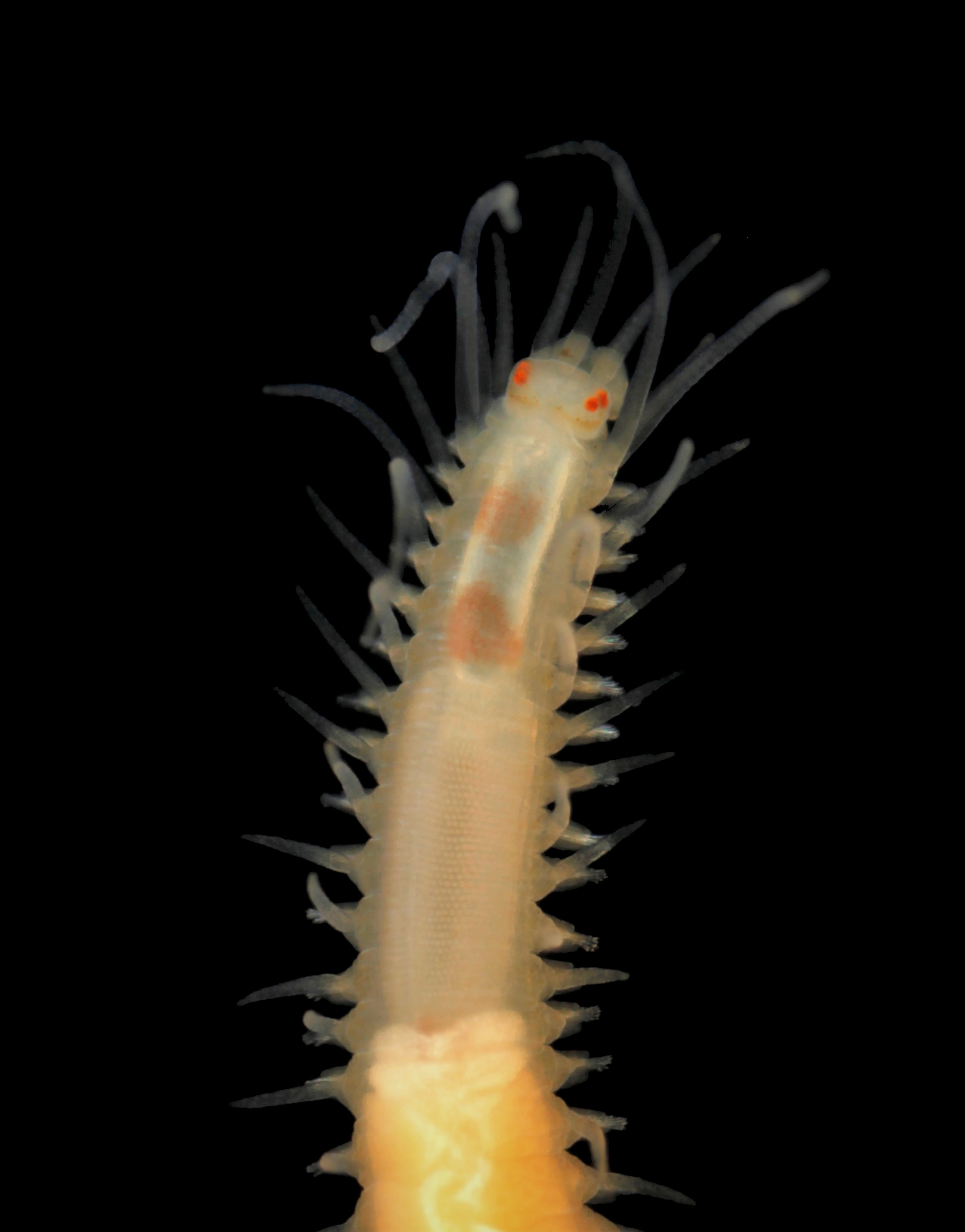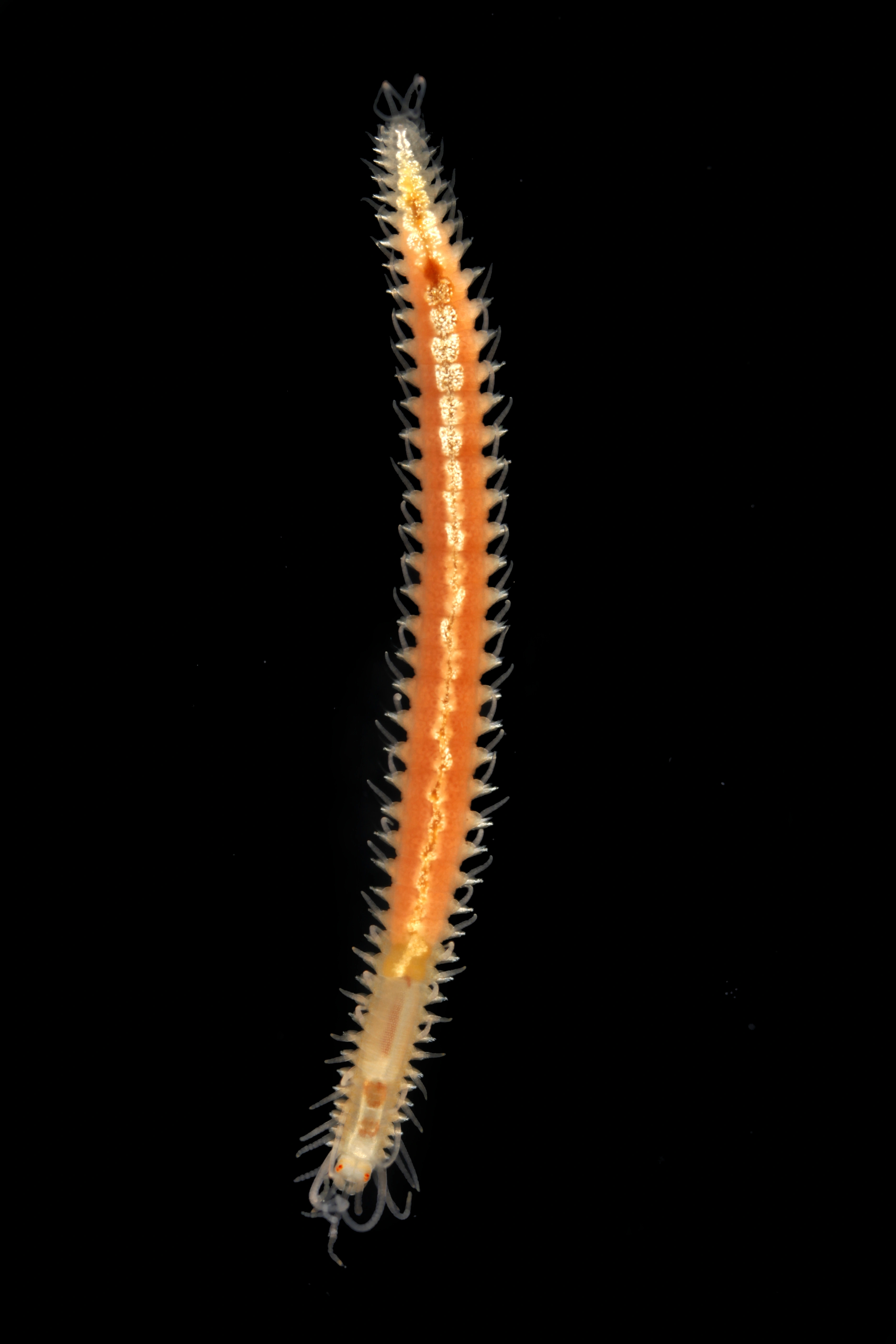Eusyllis blomstrandi
Eusyllis blomstrandi
Eusyllis blomstrandi is a common species in shallow hard bottoms with the brown algae Laminaria spp., and sometimes present in anthropogenic environments as well.
- Innhold
- Measurements
- Characteristics
- Look-alikes
- Biology, ecology and behaviour
- Habitat
- Recommended citation
Measurements
Eusyllis blomstrandi. Gravid female, details of anterior end.
Up to 3.5 cm long and with more than 100 segments.
Characteristics
Eusyllis blomstrandi is easily recognizable when alive due to its colour pattern on dorsum, with two brown bands on the anterior end, which often are conserved after fixation, and scattered white spots in the intestinal region. The head has four eyes and two small eye spots, which are red when the worm is alive. The palps are longer than the head and are fused at the base. The antennas and the front dorsal cirri are segmented, but the mid and posterior appendices are smooth. The blades of the composite chaetae vary slightly in length.
Look-alikes
Eusyllis blomstrandi. Gravid female.
Some syllids are superficially similar, but Eusyllis blomstrandi is characteristic by the morphology of the appendages, which are compound and articulated on the anterior end and smooth on the rest of the body. The characteristic colour pattern is also at great help for identification.
Biology, ecology and behaviour
Eusyllis blomstrandi builds thin-walled transparent tubes in which it lives. It eats hydroids and some algae. It reproduces by epitoky, where sexually mature individuals undergo metamorphosis and swim to the surface of the sea for spawning. After mating, they return to a life at the bottom. The animals can emit short green flashes of light if disturbed.
Habitat
The species is found on both sides of the North Atlantic, in the Arctic, and in the North Pacific. They are generally found in shallow hard bottoms with Laminaria and red algae.
Recommended citation
Capa M. Eusyllis blomstrandi Malmgren, 1867. www.artsdatabanken.no/Pages/313101. Downloaded <year-month-day>.


